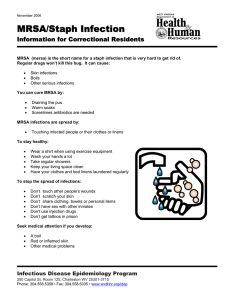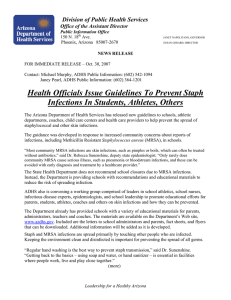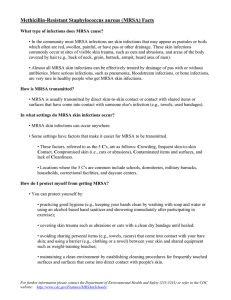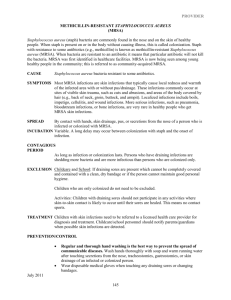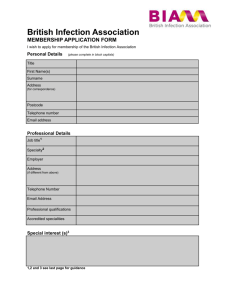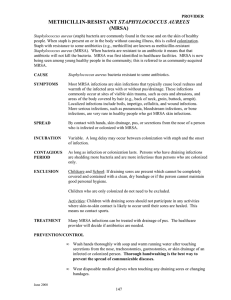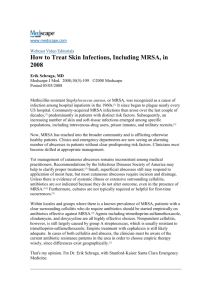Importance of new diagnostic and prevention
advertisement
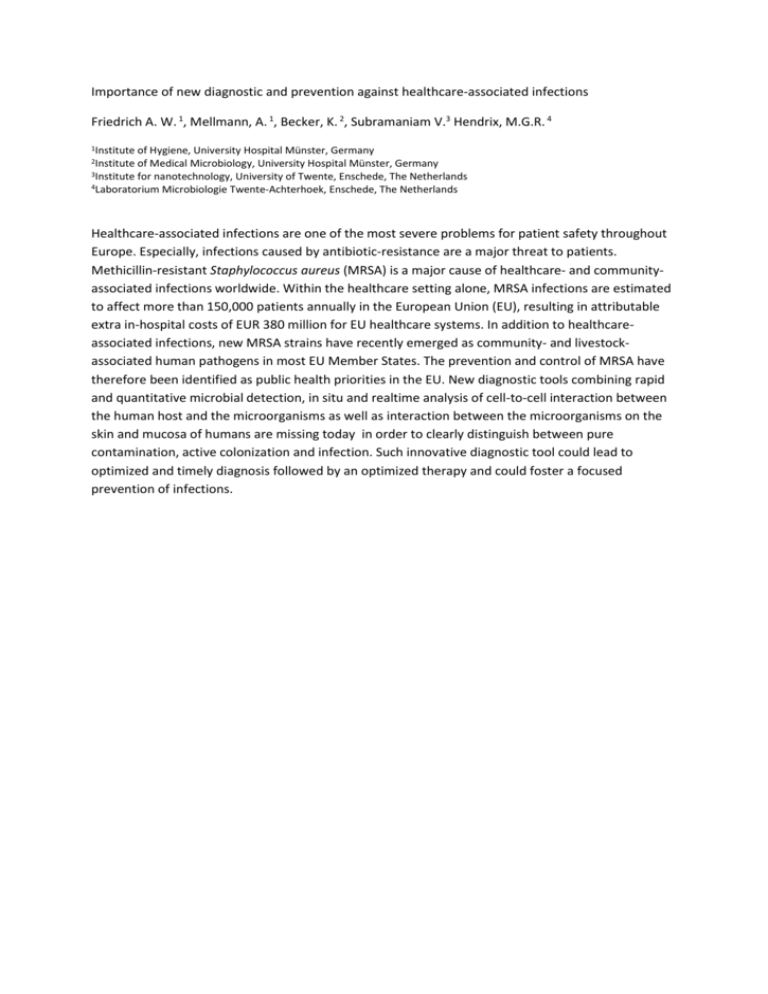
Importance of new diagnostic and prevention against healthcare-associated infections Friedrich A. W. 1, Mellmann, A. 1, Becker, K. 2, Subramaniam V.3 Hendrix, M.G.R. 4 1Institute of Hygiene, University Hospital Münster, Germany of Medical Microbiology, University Hospital Münster, Germany 3Institute for nanotechnology, University of Twente, Enschede, The Netherlands 4Laboratorium Microbiologie Twente-Achterhoek, Enschede, The Netherlands 2Institute Healthcare-associated infections are one of the most severe problems for patient safety throughout Europe. Especially, infections caused by antibiotic-resistance are a major threat to patients. Methicillin-resistant Staphylococcus aureus (MRSA) is a major cause of healthcare- and communityassociated infections worldwide. Within the healthcare setting alone, MRSA infections are estimated to affect more than 150,000 patients annually in the European Union (EU), resulting in attributable extra in-hospital costs of EUR 380 million for EU healthcare systems. In addition to healthcareassociated infections, new MRSA strains have recently emerged as community- and livestockassociated human pathogens in most EU Member States. The prevention and control of MRSA have therefore been identified as public health priorities in the EU. New diagnostic tools combining rapid and quantitative microbial detection, in situ and realtime analysis of cell-to-cell interaction between the human host and the microorganisms as well as interaction between the microorganisms on the skin and mucosa of humans are missing today in order to clearly distinguish between pure contamination, active colonization and infection. Such innovative diagnostic tool could lead to optimized and timely diagnosis followed by an optimized therapy and could foster a focused prevention of infections.
